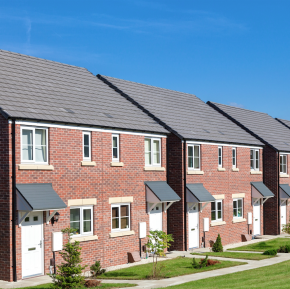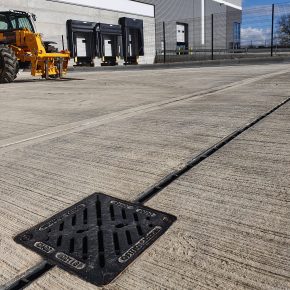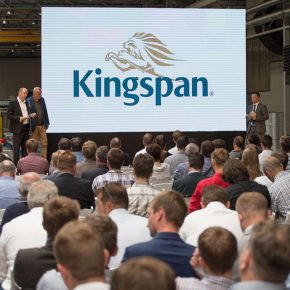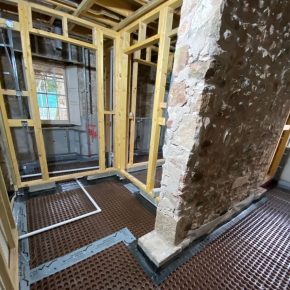
GUEST ARTICLE: Top tips for heating system design
When specifying a heating system for a new build property, there are a wide variety of considerations that need to be taken into account to make sure that the heating system can produce maximum efficiency returns. British boiler manufacturer Potterton Residential advises on the best practices.
The integration of an appropriate heating system into a new build is vital to maximising the level of heat output and return on investment. Standard Assessment Procedure (SAP) assessors will typically make recommendations on heating systems in order to reach the clients required rating.
To achieve the required SAP rating for a property there needs to be good levels of insulation along with a highly efficient heating and hot water system and the developer has to balance his choice of equipment and materials to achieve the most economical build to reach the required ratings.
Potterton’s NewDesign team provide a complete design service for residential developments and work with SAP assessors to help house builders to meet energy targets. Here’s our checklist for creating the perfect heating system for a property:
Placement
The usual position for boilers is in the kitchen or the utility room and cylinders normally airing cupboards, although recently, as customers want more space because of multi-generational living amongst other elements, boilers have been moving out of the kitchen area and into garages, airing cupboards and W/C’s.
Radiators
Radiators should ideally be placed beneath window sills, where possible, as cold air entering the room is heated by the convective air. The heating reach is usually 2.5 metres from the radiator so if seating areas are situated outside of this range cold spots maybe experienced by the house occupants. Two smaller radiators at opposite ends of the room are preferable to one large radiator at one end of the room.
Flue
The flue position is critical as boundary lines must be followed whilst still being aware of window openings and nuisance from plumes. Flue installers should consult the boiler manual for guidance on positioning the flue to maintain the minimum clearances and prevent any future issues from arising.
Room Thermostat
As well as selecting the correct thermostat for the system, the location of the thermostat has a major effect on comfort levels and efficiency of the system.
The following pitfalls should be avoided:
– Installing thermostats in rooms that have another heat source such as a kitchen or sun room
– Installing thermostats in small enclosed corridors or box rooms
– Fixing the thermostat on the adjoining walls of a cylinder cupboard, as this will affect the temperature reading
Thermostats should be located a suitable distance away from radiators and glazing to reduce the risk of an obscure temperature reading.
Commissioning
A full commissioning process must also take place once the heating system has been installed. This is an essential part of the process as it enables the system to function correctly and provides a record for future checks to maintain system efficiency.
Latest news

9th May 2024
AWMS: Gatic drainage solutions chosen for ambitious ‘futureproof’ logistics facility
Ascent Logistics Park is a sustainable construction project situated in one of the UK’s newly recognised industry hotspots – Gatic CastSlot and Gatic Kerbdrain from AWMS were specified there.
Posted in Articles, Building Industry News, Building Products & Structures, Building Services, Case Studies, Civil Engineering, Concrete, Cement, Admixtures, Drainage, Drainage Services, Drainage, Guttering, Soffits & Fascias, Facility Management & Building Services, Hard Landscaping & Walkways, Landscaping, Plumbing, Posts, Restoration & Refurbishment, Retrofit & Renovation
9th May 2024
DensDeck: How can you reduce the risk of solar panel roof fires?
To reduce the risk of a solar panel flat roof fire, measures should be taken to prevent electrical arcing, as this is the major factor that could cause an outbreak of fire. DensDeck explains more…
Posted in Articles, Building Industry News, Building Products & Structures, Building Services, Facility Management & Building Services, Health & Safety, Posts, Restoration & Refurbishment, Retrofit & Renovation, Roofs, Security and Fire Protection, Site Preparation, Sustainability & Energy Efficiency
9th May 2024
MCRMA welcomes Kingspan Insulated Panels as latest member
One of the global leaders in insulated panel systems for the building envelope has become the latest high profile systems manufacturer to join the MCRMA.
Posted in Articles, Building Associations & Institutes, Building Industry News, Building Products & Structures, Cladding, Facades, Insulation, Restoration & Refurbishment, Retrofit & Renovation, Roofs, Walls
8th May 2024
Delta Membranes: Type A and Type C Waterproofing
The scope of the following Delta project was to offer a waterproofing solution to an early 19th century two storey, listed cottage sited in a conservation area of beautiful countryside in Scotland.
Posted in Articles, Building Industry News, Building Products & Structures, Building Services, Case Studies, Damp & Waterproofing, Drainage Services, Drainage, Guttering, Soffits & Fascias, Facility Management & Building Services, Membranes, Restoration & Refurbishment, Retrofit & Renovation, Walls
 Sign up:
Sign up: